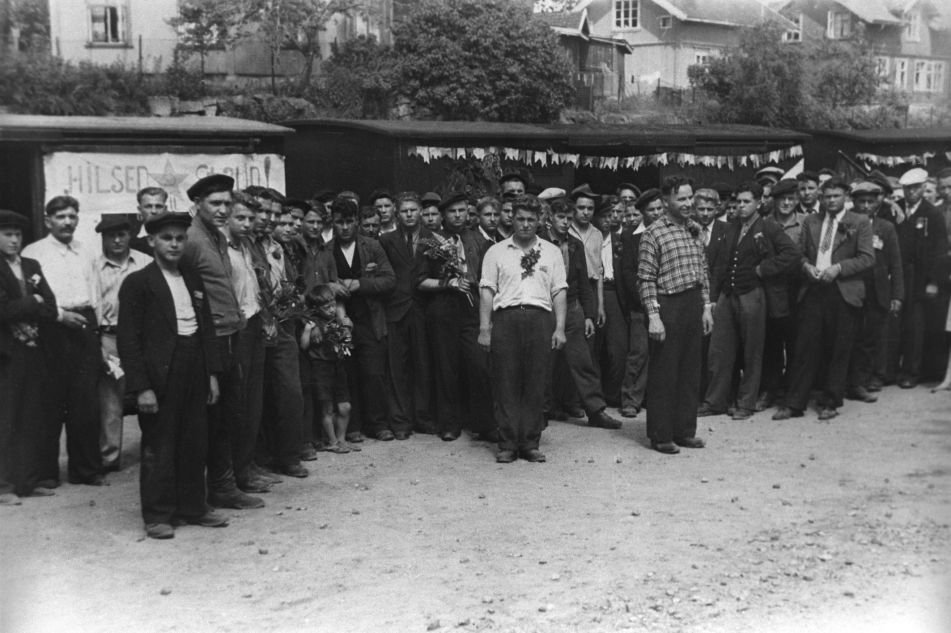On 30 November and 1 December, the Tribunal examined the first witness at the trial. Major-General Erwin von Lahousen described some episodes of “Nazi kitchen”, where plans to exterminate the Polish population and Soviet prisoners of war were prepared.
Erwin Lahousen served in Austria’s counter-intelligence services from 1935 to 1938 and was its de facto chief. After the annexation of Austria, the Anschluss, when German intelligence absorbed the Austrian one, Lahousen was transferred to Abwehr, the German military intelligence service for the Reichswehr and Wehrmacht, as Deputy Chief of Section I.
The entire Abwehr was subordinate to the chief of German military intelligence, Admiral Wilhelm Canaris, the “white raven” among Hitler's generals. Canaris did not survive to go on trial as he was executed in April 1945 for his links with the British counter-intelligence. Therefore, Lahousen was one of the few living witnesses who was aware of the details of the preparation for military aggression and was willing to side with the prosecution.
Lahousen’s top leadership role enabled him to witness and participate directly in meetings with Hitler, Foreign Minister Joachim von Ribbentrop and the Chiefs of Staff of the Wehrmacht's High Command, Wilhelm Keitel and Alfred Jodl.
On 12 September 1939, Lahousen was part of a group that accompanied Hitler on a trip to Poland, which was struggling in those days to resist an invasion by the Germans. Abwehr Chief, Admiral Canaris, noted in his diary the conversations that took place in the Führer’s train. The talks concerned the partition of Poland and plan to physically exterminate Polish intellectuals, nobles and clergy.
The International Military Tribunal at Nuremberg has admitted Canaris's records as evidence. Standing behind the witness box, Lahousen quoted from his memory the prophetic phrase Canaris made that day and put it down in his diary:
“One day the world will also hold the Wehrmacht, under whose eyes these events occurred, responsible for such methods.”
The Court’s examination of witness Lahousen was conducted by Colonel John Amen, an American lawyer. When the witness brought up the fate of Soviet prisoners of war and his desire to prevent unlawful executions, Soviet prosecutors joined the interrogation. Roman Rudenko, the chief prosecutor for the USSR, brought a barrage of questions to Lahousen, of which some were very emotional:
“Your usual topic of discussion was murders, shootings, and so forth, especially shootings. I am interested in all that. What did Müller say about it? How were shootings to take place, especially in relation to your protests?”
Later on, during the trials, there will be more discussion about crimes against Soviet prisoners of war. In February 1946, Yuri Pokrovsky, Deputy Chief Prosecutor for the USSR, would return to this topic.
He would cite the Hague Convention of 1899: “Prisoners of war lose their freedom but retain their rights. In other words, military confinement is not an act of mercy on the part of the captor, but the right of disarmed persons.” Three years later, the “rights of the disarmed” will be specified in the new Third Geneva Convention, relative to the Treatment of Prisoners of War.
From The Hague to Geneva: Treatment Regulations of POWs
In the First World War, the parties were to be guided by the Hague Convention of 1907 respecting the Laws and Customs of War on Land. Its provisions mainly concerned the conditions of detention of prisoners and the procedure for disciplinary action.
In 1921, at the International Conference of the Red Cross held in Geneva, it was proposed that a set of rules be drawn up to specify and supplement the Hague Convention. The organisation took over the development of the project and presented it at the Diplomatic Conference in Geneva in 1929. It was signed and ratified by 53 countries, including Germany and Italy. Japan and Finland have remained signatory countries that have not ratified the treaty.
The USSR did not sign the convention either. It insisted on privileges for officers and respect for the principle of internationalism, whereby prisoners from different countries can be accommodated together if they so wish. In 1931, the USSR adopted its own “Regulations on Prisoners of War”, which did not have international status.
The German invaders used the Soviet Union’s decision not to sign the Geneva Convention to justify the inhumane treatment of prisoners of war in the East: “The Soviet Union did not subscribe to the agreement of 27 July 1929, concerning the treatment of prisoners of war. Consequently, we are not obliged to supply Soviet prisoners of war with food corresponding in quantity or quality to the requirements of this regulation”, (according to a quotation from the German High Command of the Army, Army Equipment and the Commander-in-Chief of the Replacement Training Army Directive on "Food ration of Soviet prisoners of war”, Berlin, 6 August 1941).
In doing so, the Nazis ignored Article 82 of the Geneva Convention: “In case, in time of war, one of the belligerents is not a party to the Convention, its provisions shall nevertheless remain in force as between the belligerents who are parties thereto”. And in their secret documents, they explicitly ordered the troops to be brutal to the enemy: “Bolshevism is the deadly enemy of Nazi Germany. (…) The Bolshevist soldier has therefore lost all claim to treatment as an honourable opponent in accordance with the Geneva Convention”. (Appendix to the Order of OKW on the “Regulation for the treatment of Soviet PWs in all prisoner of war camps”, secret dated 8 September 1941).
























